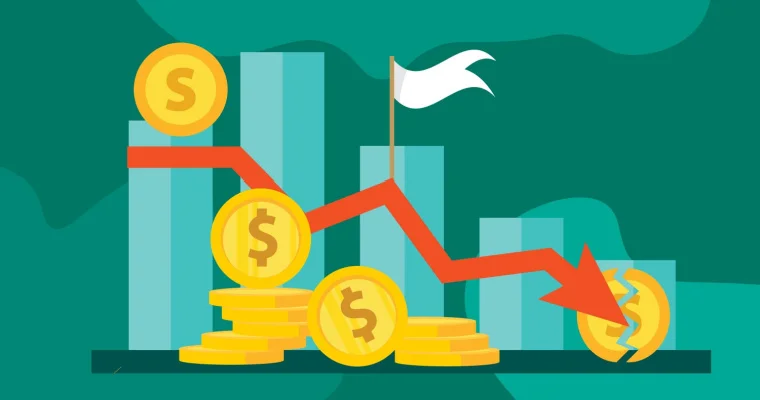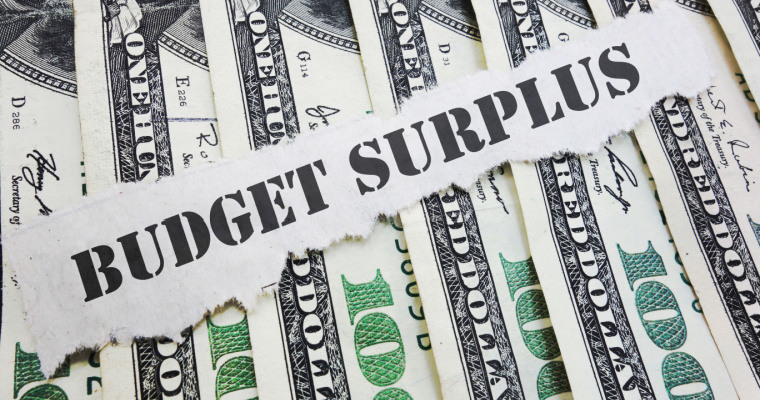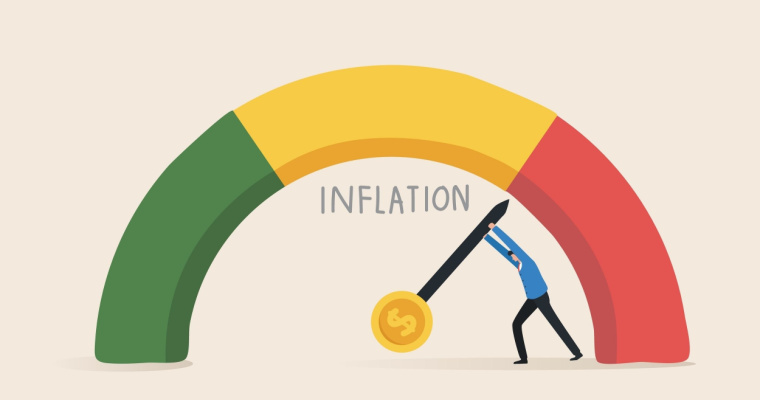What is Balanced Budget – Components, Importance and Examples

In financial planning or the budgeting process, a balanced budget is one in which total anticipated revenues and total anticipated expenditures are equal. Although mostly utilised for government budgets, the idea is still relevant to other organisations as long as they generate income and spend money.
Let’s learn more about balanced budget in detail.
What is a Balanced Budget?
Balanced budget is defined as a budgeting plan where your estimated expenses are less than or equal to your revenues. Balanced budgets help prevent more debt, benefiting people, businesses, and even governmental organisations. Read on to find out more about this topic in detail and take a closer look at their functioning.Some people believe a balanced budget is preferable because they think that budget deficits would cause a debt burden on future generations.
How Does a Balanced Budget Work?
Being financially secure requires having an annually balanced budget since it enables you to stay out of debt and achieve your savings objectives.
A budget deficit is a situation wherein your spending is more than your income. The difference must then be made up by borrowing money from another source, such as a credit card or loan. Your debt rises as a result. Additionally, if your debt balloons out of control, it might seriously threaten your financial stability.
On the contrary, a budget surplus is what you have when there is money left over after all of your expenses have been met.
This is advantageous because it shows that you are not incurring debt to support your lifestyle and are instead living within your means. In this case, your expenses are lower than your income, and you have extra money to set aside for savings objectives, making your budget ideally balanced.
Importance of a Balanced budget
A balanced budget means that the amount earned by the federal government equals the amount spent, that is,
Revenue = Expenditure
A balanced budget is one that strikes a balance between budget deficits and budget surpluses, but it can also refer to one that runs a surplus. This means
Revenue > Expenditure
For the following reasons, a balanced budget is essential:
- It ensures that the government does not waste money.
- It allows the government to focus its resources on the most pressing issues.
- Budget surpluses help in the saving of funds for pressing economic issues such as recessions. As a result, when the economy slows, the government can use the accumulated funds to stimulate the economy.
- The Government occasionally needs to borrow large sums of money from international organisations, which usually charge a high interest on the loans. As a result, by maintaining a balanced budget, the government can avoid these charges.
During stressful years, it allows the Government to exert control over policies.
Also Read
Balanced Budget Components
Here are some of the components of balanced budget:
1. Revenues
Revenues for corporations and non-governmental organisations are generated through the sale of goods and/or services whereas the majority of government revenue comes from corporate taxes, income taxes, social insurance taxes, and consumption taxes
2. Expenses
Expenses for corporations and non-governmental organisations include the amount spent on daily operations and factors of production, such as rent and wages. Government expenses, on the other hand, include infrastructure, defence, pensions, healthcare, subsidies, and other factors that contribute to the overall health of the economy.
Balanced Budgeting Examples
Due to the volatility of the factors that contribute to a surplus and/or a deficit, balanced budgets with equal revenues and expenses are uncommon. A famous balanced budget example is that of Canada reporting revenue of $332.2 billion and expenses of $346.2 billion in 2017, resulting in a $14 billion budget deficit.
- Countries such as Germany, Switzerland, and South Korea, on the other hand, reported a budget surplus, which could be considered a balanced budget.
- It is also worth noting that such a budget can be created annually, biennially, or cyclically.
- An annual balanced budget balances the budget for the fiscal year in question.
- A biennial balanced budget allows for budget fluctuations over a two-year period. A biennially balanced budget will result from a surplus in one and a deficit in the other of the same amount.
Budgets that are cyclically balanced account for economic conditions. They are typically in deficit during economic downturns and in surplus during economic booms.
What are the Budget Variance Analysis and its Applications?
A budget variance analysis compares the actual figures reflected in the budget to the estimated baseline or standard figures.
Favourable Variance- A favourable variance occurs when the actual result exceeds the projection; that is when revenues exceed projections and expenses fall below estimates.
Negative Variance- A negative variance occurs when the actual result falls short of the projected figures; for example when revenues are lower and expenses are higher than expected.
A balanced budget often contributes to a favourable budget variance analysis outcome.
What are the Advantages of a Balanced Budget?
A balanced budget can be critical for a government entity for two reasons. First, it may be unable to sell sufficient debt securities to cover the shortfall, or at least not at a reasonable interest rate. Second, future taxpayers will be weighed down with the burden of covering the shortfall, possibly through higher taxes.
What are the Disadvantages of a Balanced Budget?
The notion of a balanced budget can be misleading when overly optimistic presumptions are used in budget formulation, resulting in a low probability of a balanced budget occurring. When actual results show a deficit, an entity may have to scramble to secure adequate funding to cover the deficit. To ensure that the deficit does not continue, operations may need to be restructured (usually with cost cuts).
Also Read
Balanced Budget vs Static Budget
It is essential to distinguish between a balanced budget and a static budget.
A balanced budget occurs when you ensure that you spend no more than you take in. This budget does not have to be set in stone. Your only concern is the bottom line: money in versus money out. You can and should be as flexible as necessary to keep that ratio positive.
A static budget is one in which your spending priorities do not change from month to month. For example, suppose you set aside Rs.20,000 per month for groceries. Under a fixed budget, you would never spend more than Rs.20,000 on groceries, regardless of the circumstances.
A static budget can be a useful tool for balancing your spending, but it is not the same as a balanced budget.
Final Word
A balanced budget allows governments to avoid excessive spending and focus their resources on areas and services that require them. Furthermore, the budget surplus would enable them to provide funds for emergencies.
FAQs
Ans. A balanced budget is one in which total anticipated revenues and total anticipated expenditures are equal. Although mostly utilised for government budgets, the idea is still relevant to other organisations as long as they generate income and spend money. After a year’s worth of revenues and expenses have been recorded and incurred, a budget can be regarded as a balance. Additionally, a company’s operating budget for the following year can also be seen as balanced based on its projections or estimates.
Ans. A static budget is one in which your spending priorities do not change from month to month. For example, suppose you set aside Rs. 20,000 per month for groceries. Under a fixed budget, you would never spend more than Rs. 20,000 on groceries, regardless of the circumstances. A static budget can be a useful tool for balancing your personal spending, but it is not the same as a balanced budget.
Ans. When calculating budget balance, a budget deficit is a situation wherein your spending is more than your income wherein, on the contrary, a budget surplus is what you have when there is money left over after all of your expenses have been met.
Ans. A favourable variance occurs when the actual result exceeds the projection; that is when revenues exceed projections and expenses fall below estimates while negative variance occurs when the actual result falls short of the projected figures; for example, when revenues are lower and expenses are higher than expected. A balanced budget often contributes to a favourable budget variance analysis outcome.

Customer’s Feedback
No comments found.What is Primary Deficit? – Example, Formula & Measures
What is a Primary Deficit? Primary Deficit is the difference between the current year’s fiscal... Read More »What is Financial Ratio Analysis? – Objectives, Types and Uses
Ratio analysis is a process that allows people to assess the financial health of a company. Using t... Read More »Treasury Management – Its Functions, Types and Benefits
Even the most well-funded business can run into huge losses if it does not have the resources to fu... Read More »How Anti Money Laundering Combats Financial Crime?
Anti Money Laundering (AML) is a system of rules, laws, regulations, and procedures that financial ... Read More »What is Salvage Value and Why is it Useful?
Salvage value, also called scrap value, is the value of a specific asset after its useful life. In ... Read More »Key Difference Between Factoring and Forfaiting in Trade Finance
Factoring and forfaiting have grown in prominence as major sources of export financing. For the uni... Read More »What is Factoring and its Importance in Financial Management?
Factoring is a practice in which a company buys the accounts receivable of another company at a dis... Read More »What is Budget Surplus: Its Effects, Advantages and Impact with Examples
When the revenue of a government, business, or individual exceeds its expenses in a given period, i... Read More »What Does Inflationary Gap Mean in Macroeconomics?
In macroeconomics, the difference between current and potential GDP is known as a gap. This gap is ... Read More »What is Accounting Conservatism in Finance and How Does it Work?
Accounting conservatism involves a conservative set of accounting guidelines wherein the worst-case... Read More »Multiple Linear Regression (MLP) – Uses, Formula and Examples
Various statistical models help in establishing a relationship between different variables. Multipl... Read More »What is Debt Funding and Why Should You Choose it?
A business can raise funds by borrowing through debt funding. Although debt can take many different... Read More »Top 10 Chit Fund Schemes in India in 2023
Chit funds are one of the most popular return-generating saving schemes in India. It is a financial... Read More »10 Best Gold ETFs in India to Invest in April 2023
Gold ETFs or Gold Exchange Traded Funds are passively managed funds that track the price of physica... Read More »10 Best Demat Accounts in India for Beginners in 2023
Creation of Demat accounts revolutionised the way trades were conducted at the stock exchanges. It... Read More »20 Best Index Funds to Invest in India in April 2023
What is an Index Fund? An index fund is a type of mutual fund or exchange-traded fund (ETF) that... Read More »Best Arbitrage Mutual Funds to Invest in India in April 2023
Arbitrage funds are hybrid mutual fund schemes that aim to make low-risk profits by buying and sell... Read More »10 Best SIP Plans in India to Invest in April 2023
What is SIP? SIP or Systematic Investment Plan is a method of investing a fixed amount in ... Read More »10 Best Corporate Bond Funds in India to Invest in April 2023
Corporate bond funds are debt funds that invest at least 80% of the investment corpus in companies ... Read More »10 Best Bank for Savings Account in India [Highest Interest Rate 2023]
Savings account is a type of financial instrument offered by several banks. It lets you safely depo... Read More »
























